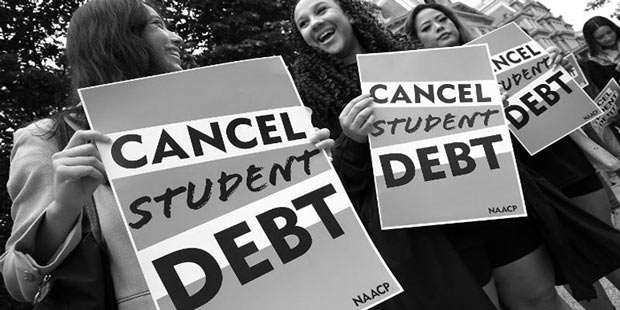Debt Forgiveness How Get Out Paying Your Student Loans
May 18, 2025 By Kelly Walker
Luckily, there is another viable option when it comes to repayment debt forgiveness! With the right information and guidance, you can begin exploring various options that may help reduce or eliminate your student loan balance.
In this blog post, we’ll explain the concept of debt forgiveness and how it might work in getting you out of making payments on student loans while keeping your credit intact.
Understand the Types of Student Loans Available
If you have federal student loans, you may be eligible for forgiveness through a variety of programs depending on the type of loan and your individual circumstances. Debt forgiveness can come in many forms, from complete elimination to partial forgiveness or repayment plans.
The most common types of federal student loans are direct subsidized and unsubsidized loans, Perkins loans, and Parent PLUS loans. These loans all come with different terms, regulations, and eligible forgiveness programs.
It’s important to understand the type of loan that you have in order to determine if you may qualify for debt forgiveness or repayment options. Knowing the details about your loan will also help you make informed decisions on how best to move forward.
Look into Debt Forgiveness Programs and Plans
The federal government offers several loan forgiveness and repayment options that may apply to your situation. These programs are designed to help borrowers who are having difficulty repaying their loans due to financial hardship or other extenuating circumstances.
For example, if you have a direct loan or Perkins loan, you may be eligible for the Public Service Loan Forgiveness program, which provides total debt forgiveness after 120 consecutive on-time payments.
Several income-driven repayment plans can help borrowers reduce their loan payments and stay current with their loans. These plans are based on your income and family size, and they can lower your monthly payments significantly.
Explore Debt Consolidation Options
Debt consolidation is another way to reduce your student loan burden. Debt consolidation combines multiple federal loans into a single loan with one payment amount, one interest rate, and one due date each month.
This method of repayment can be helpful if you’re struggling to keep up with multiple payments every month. Debt consolidation can also help lower your interest rate, which in turn reduces the total amount you will have to pay over time.
Consolidating multiple student loans into a single loan can make it easier to stay on track and manage your debt while still making progress toward debt forgiveness.
Seek Professional Help and Advice
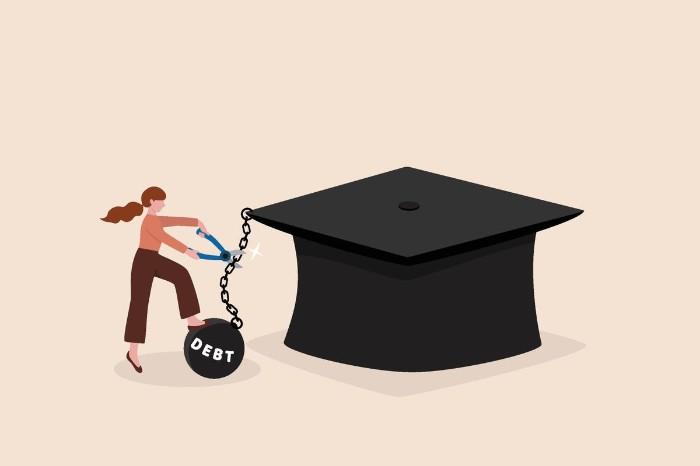
Navigating the complexities of student loan debt can be difficult, but you don’t have to do it alone. Debt relief professionals and organizations are available to help you understand your options and make informed decisions about your repayment plan.
These professionals can provide personalized advice and help you determine the best course of action to get out of debt quickly and efficiently.
If you’re struggling with student loan debt, don’t hesitate to reach out for help. Debt relief professionals can provide critical guidance and support as you work towards getting out of debt for good.
At the end of the day, Debt Forgiveness How Get Out Paying Your Student Loans is a great way to eliminate your burden and start fresh. Knowing your options and exploring different strategies can help you find a solution that works best for you. With the right plan in place, you’ll be able to get out of debt quickly and move on with your life.
Calculate How Much You Owe & Consider Consolidation
In order to identify the best debt repayment option for you, it is important to calculate exactly how much you owe. Debt consolidation can be a great way to reduce your monthly payments and make managing debt easier. Debt consolidation combines multiple loans into one loan with a single payment amount, interest rate, and due date each month.
Depending on the amount of debt you have and the type of loan, different consolidation options may be available to you. If you are eligible for federal loan consolidation, then you can combine your student loans into one convenient payment under a Direct Consolidation Loan. This will reduce the total amount of interest that accrues on all your loans.
If you have private loans, you may be able to consolidate them with a private lender. This can help you get a lower interest rate and reduce the number of your monthly payments. Be sure to carefully compare all your options before deciding on a consolidation plan.
It is important to remember that debt consolidation does not erase any past-due amounts or unpaid interest. It simply combines multiple loans into one loan, allowing you to make a single payment every month.
If debt consolidation is not an option for you, consider looking into other repayment plans such as income-driven repayment and forbearance or deferment. Keep in mind that these options could extend the length of your loan repayment period and may increase the amount of interest you pay over time.
Debt Forgiveness How to Get Out Paying Your Student Loans is an important step for anyone struggling with student debt. Knowing your options and exploring different solutions can help you make informed decisions about reducing your burden and getting out of debt quickly. With careful planning, you can take control of your financial future and get on the path to debt-free living.
Check Eligibility for Loan Repayment and Forgiveness Programs
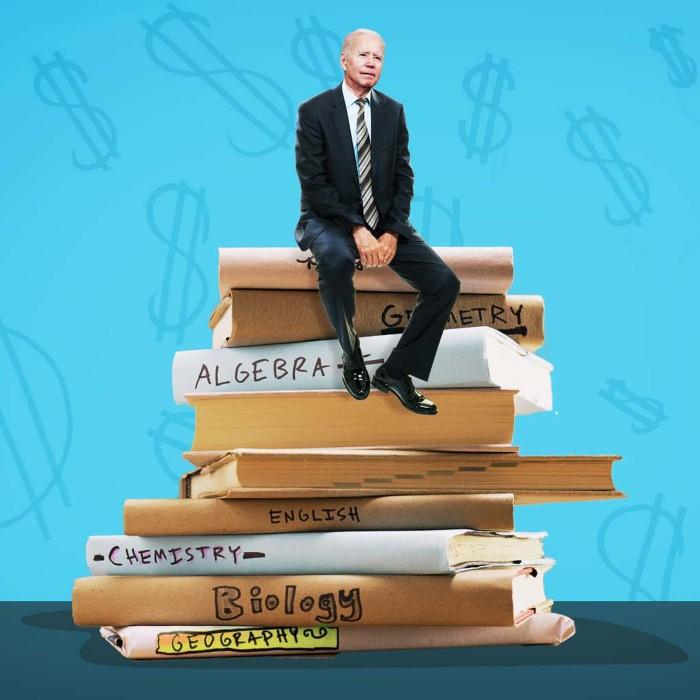
The federal government offers a number of loan repayment and forgiveness programs to help reduce the amount of debt you owe. Your eligibility for these programs is based on your income, family size, and other factors.
It is important to keep in mind that loan payments made under an eligible repayment plan can count toward Public Service Loan Forgiveness (PSLF) and other loan forgiveness programs. To be eligible for PSLF, you must have a qualifying repayment plan and make 120 on-time payments.
Other loan forgiveness programs such as the William D. Ford Federal Direct Loan Program may require that you work in a certain field or practice a specific type of law for a period of time in order to receive forgiveness.
It is important to research your options and familiarize yourself with the eligibility requirements for each program. Debt relief professionals can provide helpful guidance as you explore your loan repayment and forgiveness options.
FAQs
Does student loan forgiveness apply to paid-off loans?
No, loan forgiveness only applies to loans that are still in an active repayment period.
Are there any other options for reducing student loan debt?
Yes, some lenders may offer refinancing options or the option to temporarily pause payments. Depending on your situation, you may be eligible for a partial discharge of federal student loans, which would reduce the amount of debt you owe.
What if I am unable to make payments?
If you are not able to make payments on your student loans, contact your loan servicer as soon as possible. They may be able to help you find a solution such as an income-driven repayment plan or a deferment or forbearance.
Conclusion:
Debt forgiveness and student loans are complex topics. Choosing the right path for you doesn’t have to be overwhelming - taking the time to consider all your options and talking with an expert will ensure you make an educated decision. Debt forgiveness is an option that can enable borrowers to keep their credit intact, while still not being responsible for certain loan payments.
On this page
Understand the Types of Student Loans Available Look into Debt Forgiveness Programs and Plans Explore Debt Consolidation Options Seek Professional Help and Advice Calculate How Much You Owe & Consider Consolidation Check Eligibility for Loan Repayment and Forgiveness Programs FAQs Does student loan forgiveness apply to paid-off loans? Are there any other options for reducing student loan debt? What if I am unable to make payments? Conclusion:
Is It Possible? Transferring Your Mortgage to Another Borrower
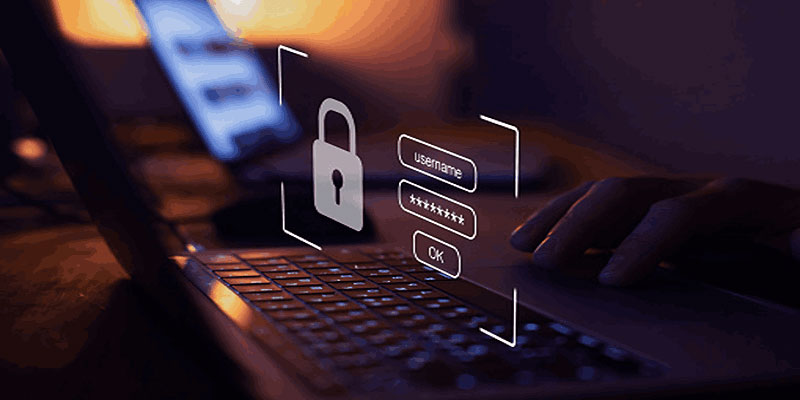
Best Identity Theft Protection Services

Online Credit Unions: How To Join and How It Works

Top Biotech Stocks
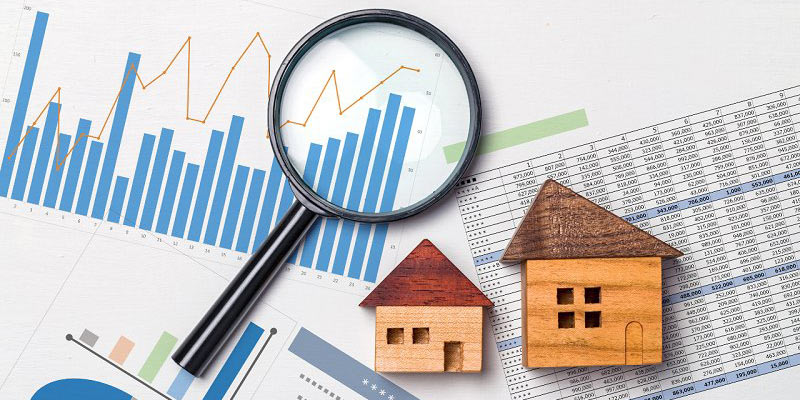
High-Value Home Insurance: What is it?
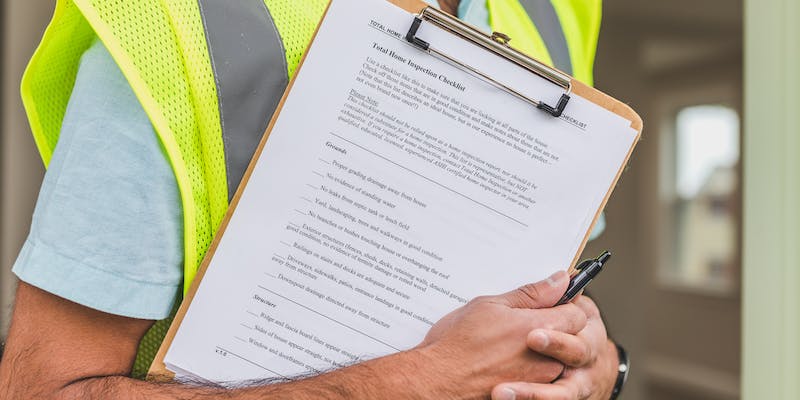
Lifespan of An Appraisal

12 Best Books on Warren Buffett

The Basics of Commodity Futures: A Beginner's Guide
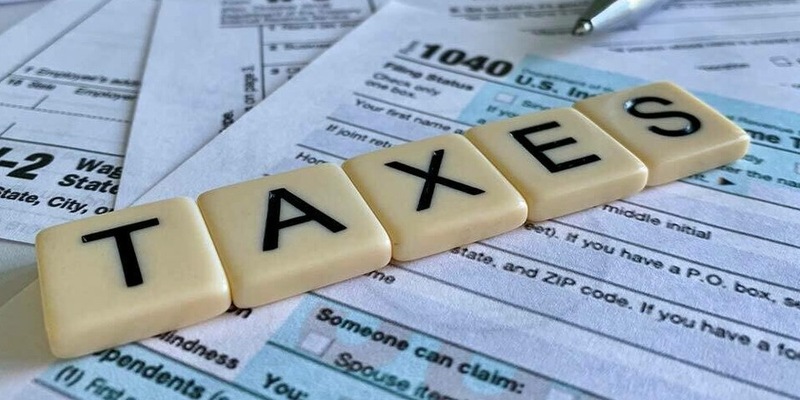
Understanding Tax Benefits

Navigating Escrow Challenges in Real Estate Transactions
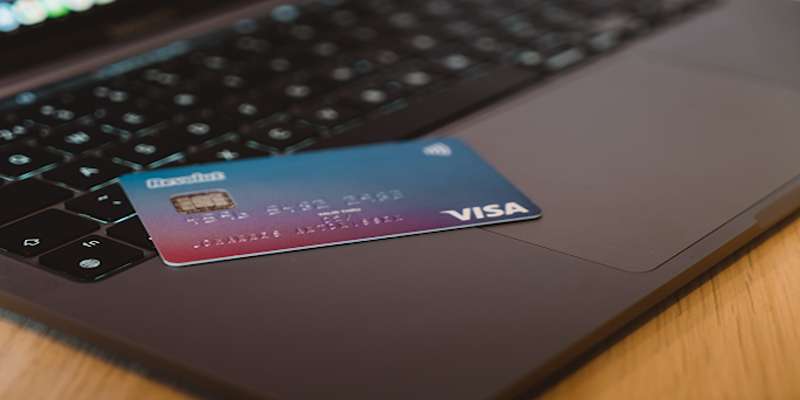
Is My Credit Score Useful Outside the US?
